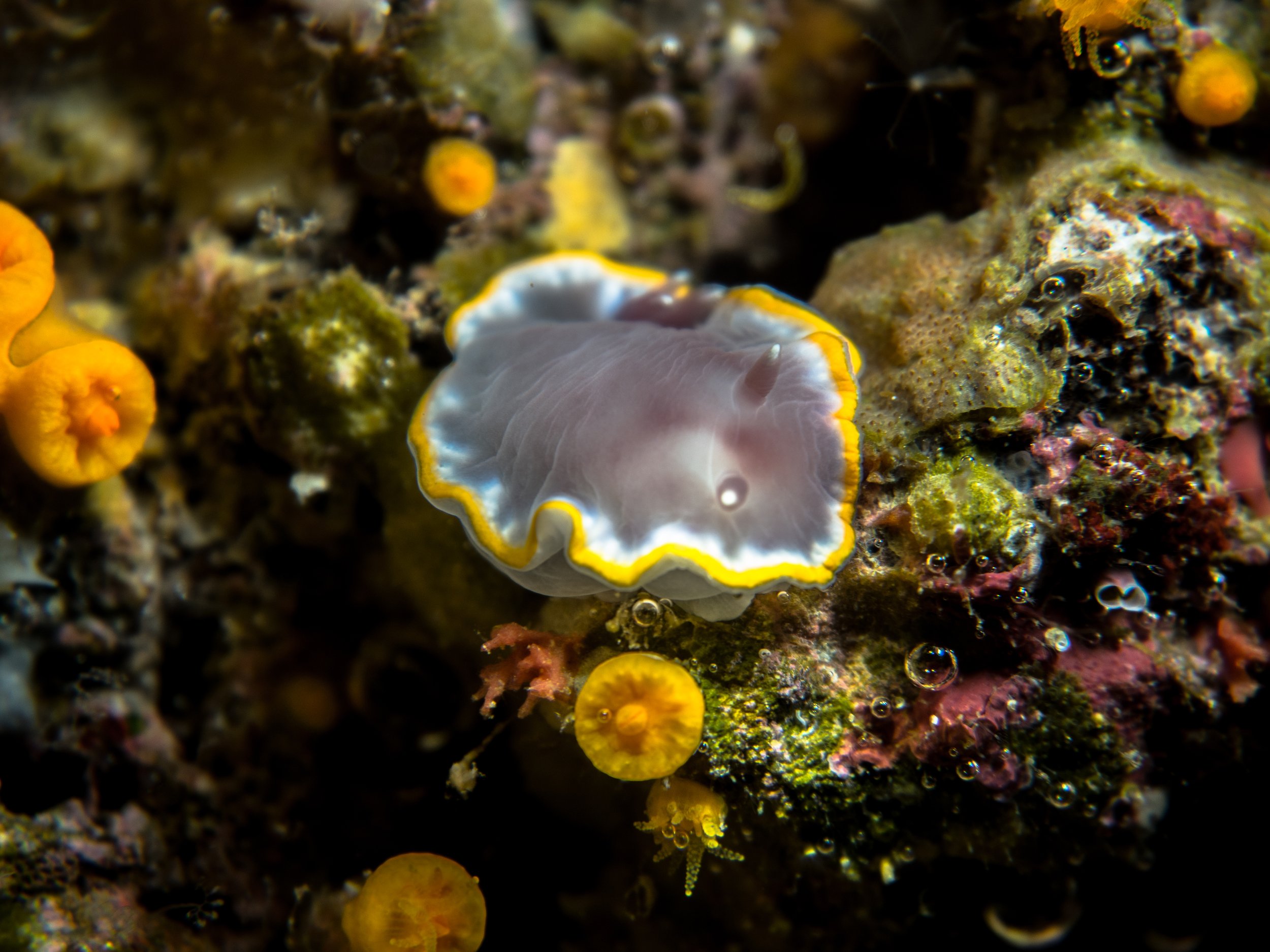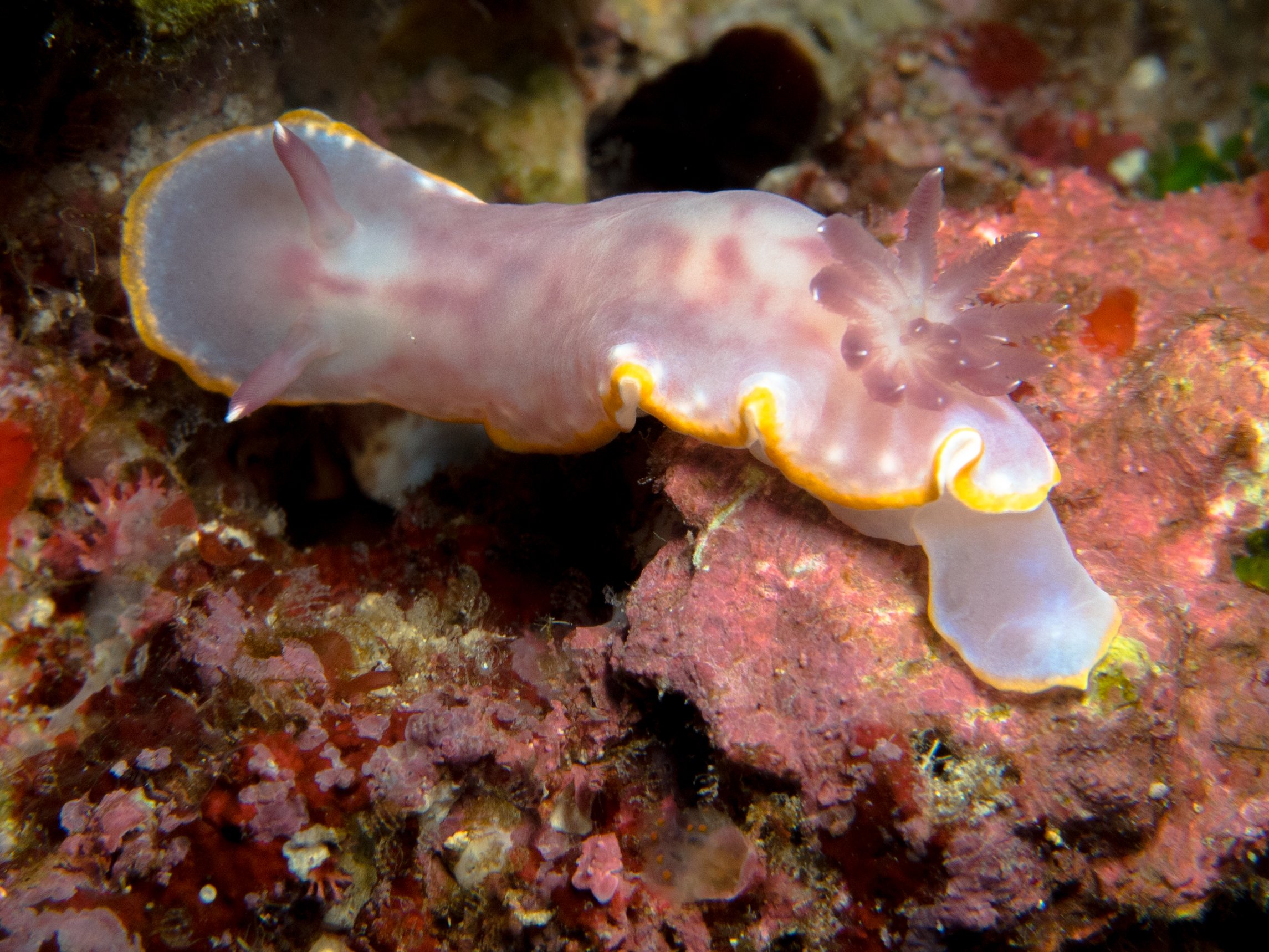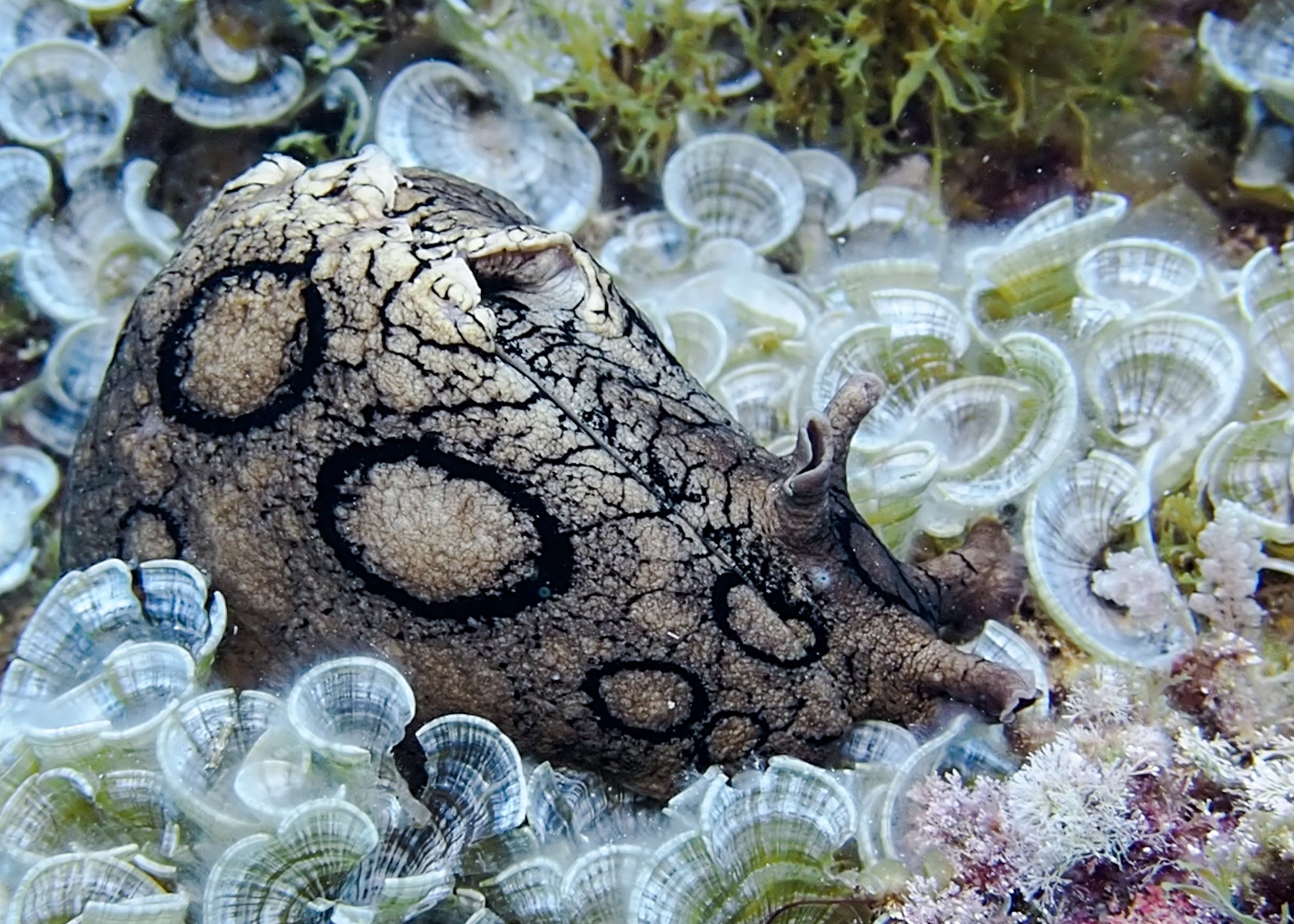Nudibranchs are hermaphrodites
Since they are such slow movers, nudibranchs need to be always ready to reproduce whenever they meet another nudibranch, irrelevant of whether the other nudibranch is a male or a female.
Unlike most snails, nudibranchs lack a shell that can be used for protection from predators (they shed their shells as larvae). This means that nudibranchs must defend themselves in other ways. Some nudibranchs use camouflage to blend in with their environments, while others use very bright and contrasting colors to signal to predators "watch out." Many aeolid nudibranchs have evolved the ability to ingest and reuse stinging cells from their prey.
Martadoris Mediterranea
The martadoris mediterranea, can grow up to 10 mm. For a good perspective of its size, in one of the photos, it is shown on my fingertip. Its preferred habitat, is posedonia meadows.







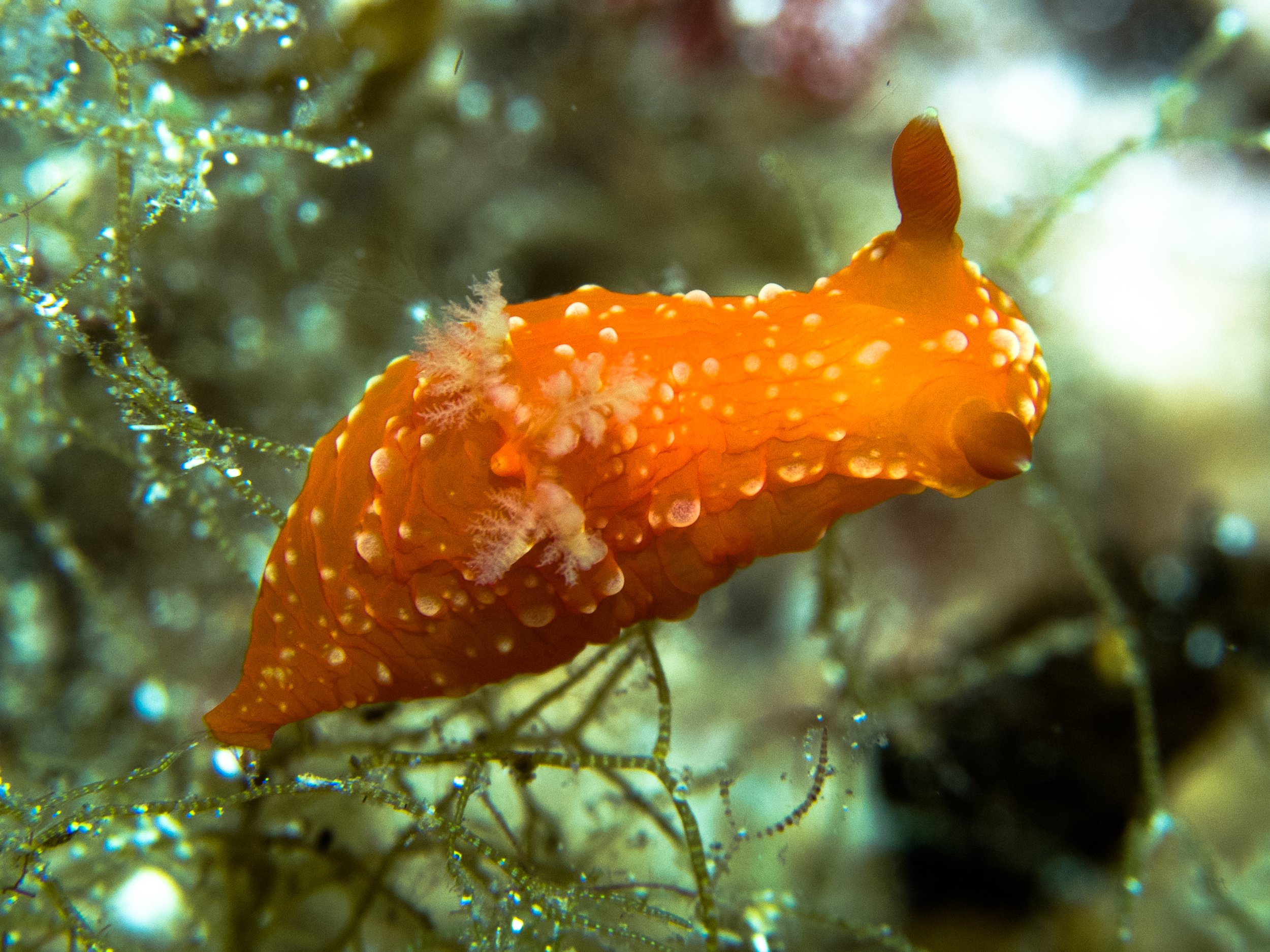



Hypselodoris tricolor
Nudibranchs are considered carnivorous
Their prey include sponges, coral, anemones, hydroids, barnacles, fish eggs, sea slugs, and other nudibranchs. But they are picky eaters and individual species or families of nudibranchs may eat only one kind of prey. This particular one only eats Dysidea, which is a particular type of sponge.





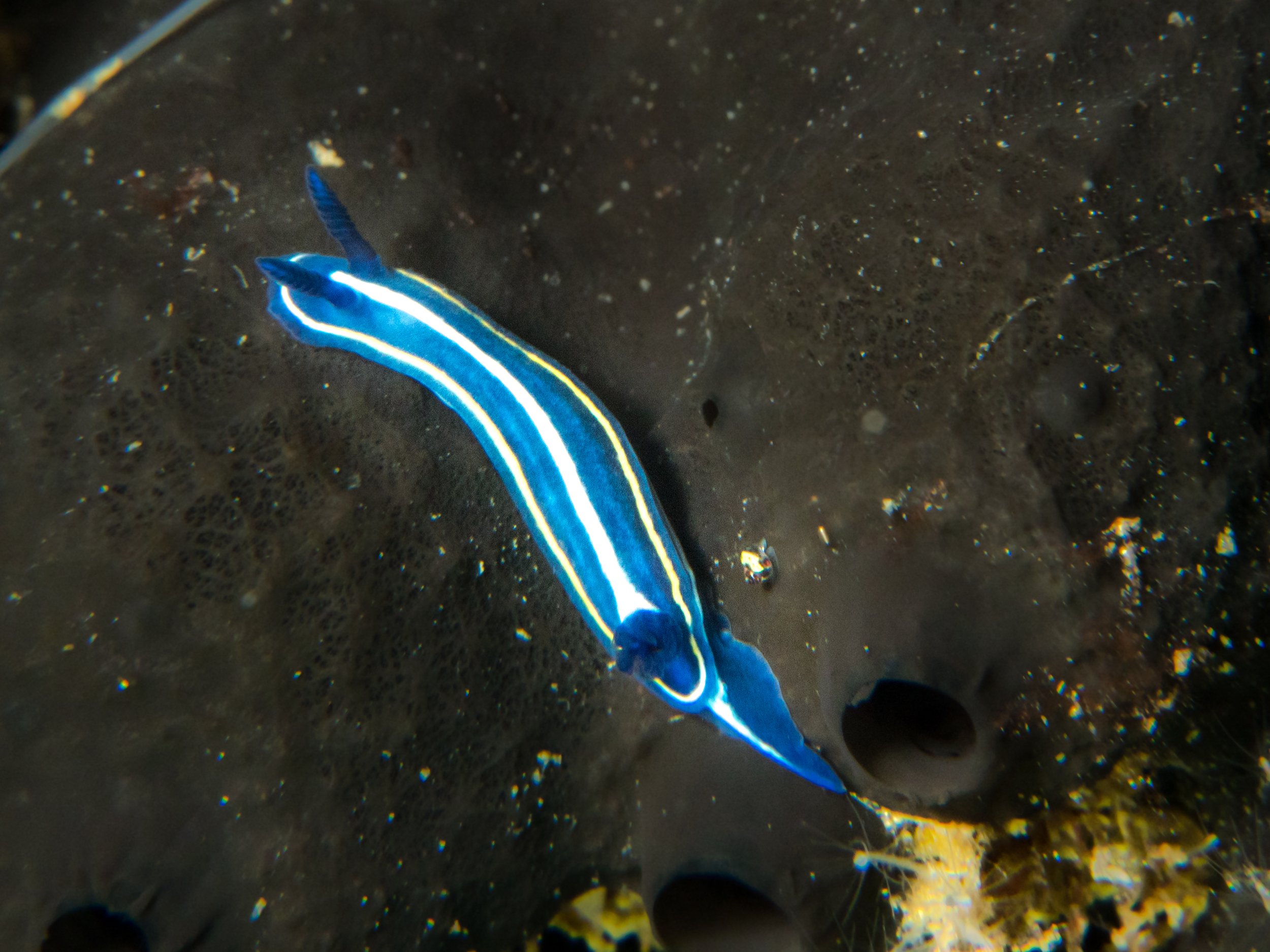





Cratena peregrina
This nudibranch is a kleptopreditor
This nudibranch has a taste for microscopic marine creatures called zooplankton, and it feeds on them using a method that's never been seen before: It captures quantities in a gulp by using hydroid polyps as an unsuspecting helpers
The hydroid polyps are tiny, coral-like animals that live in colonies and gorge on zooplankton. This nudibranch treats the polyps as living fishing nets, avidly scooping them up and swallowing them down as soon as the hapless hydroids finish their zooplankton supper.
Some animals, such as hyenas, are known for a behavior called kleptoparasitism, in which they wait until an animal kills its prey and then drive the predator away to claim its meal. However, this nudibranch behavior — stealing the predator's feast by swallowing the predator and prey together — is something that was previously unknown, and researchers dubbed it "kleptopredation" in a new study.




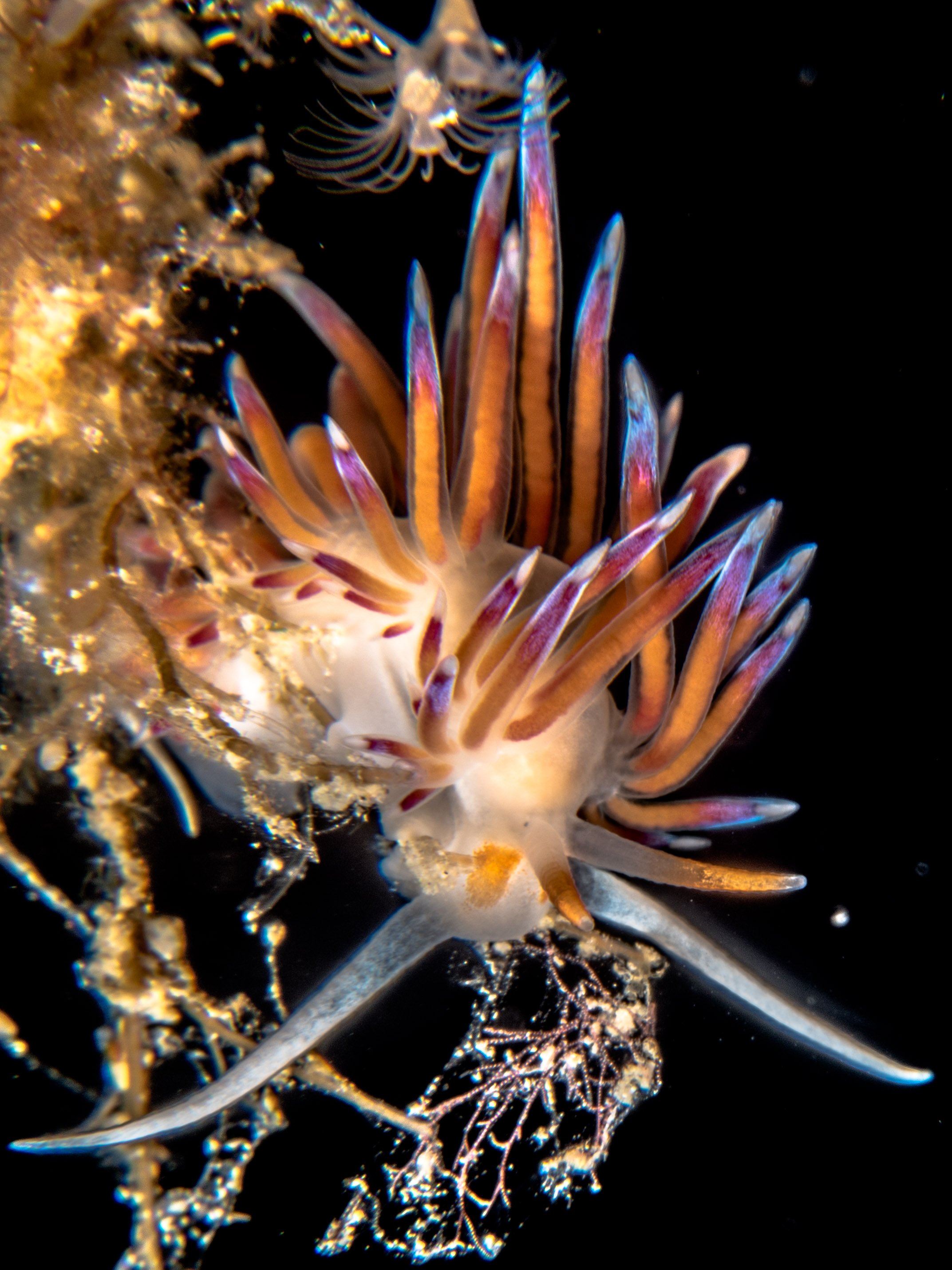
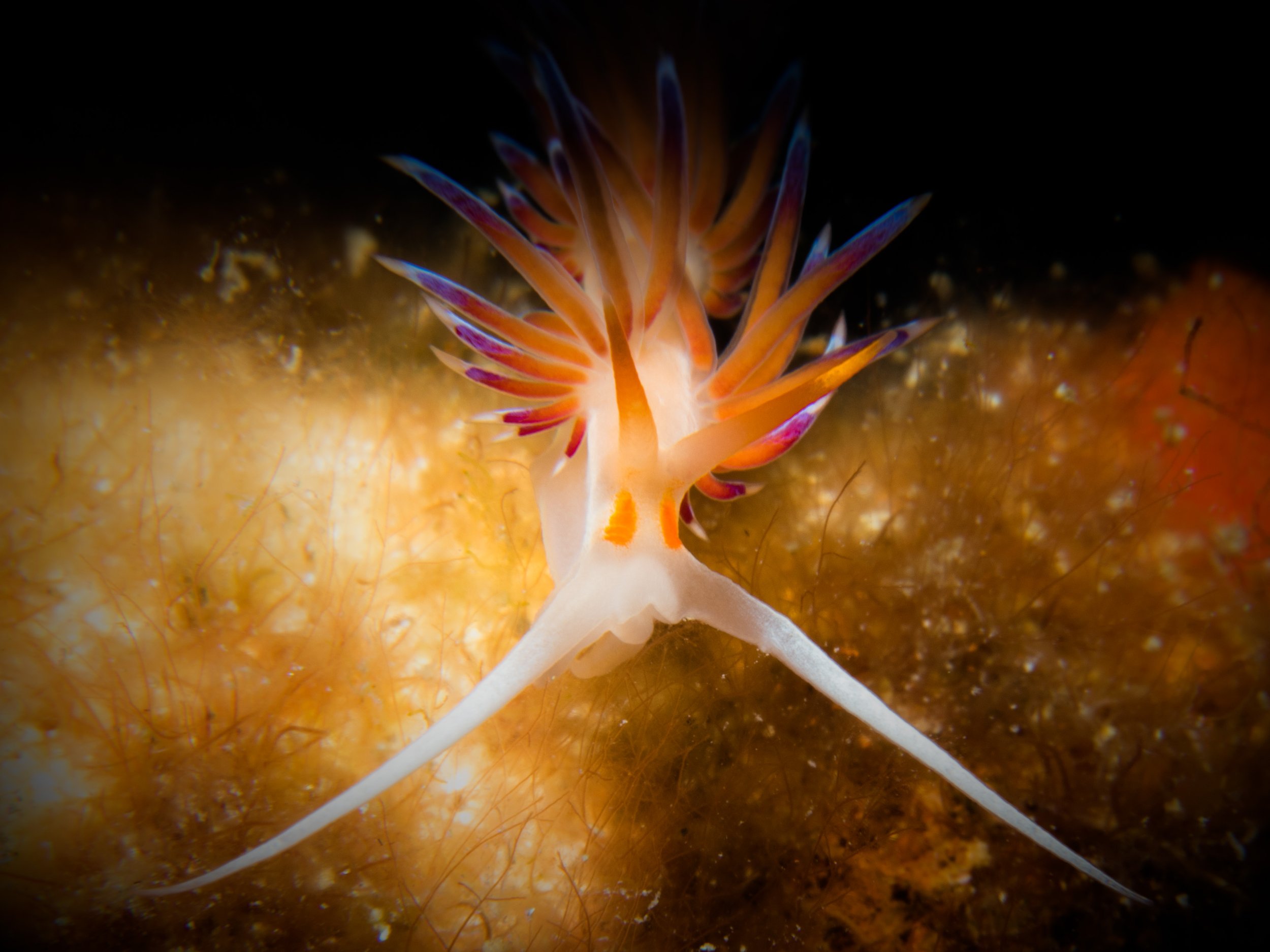










Flabellina
Did you know that the nudibranch horns are for detecting smell?
These are called rhinophores and can be retracted when under attack.
The branching growth on the back of the nudibranch is a branchial plume and acts like a gill to filter oxygen from the water.








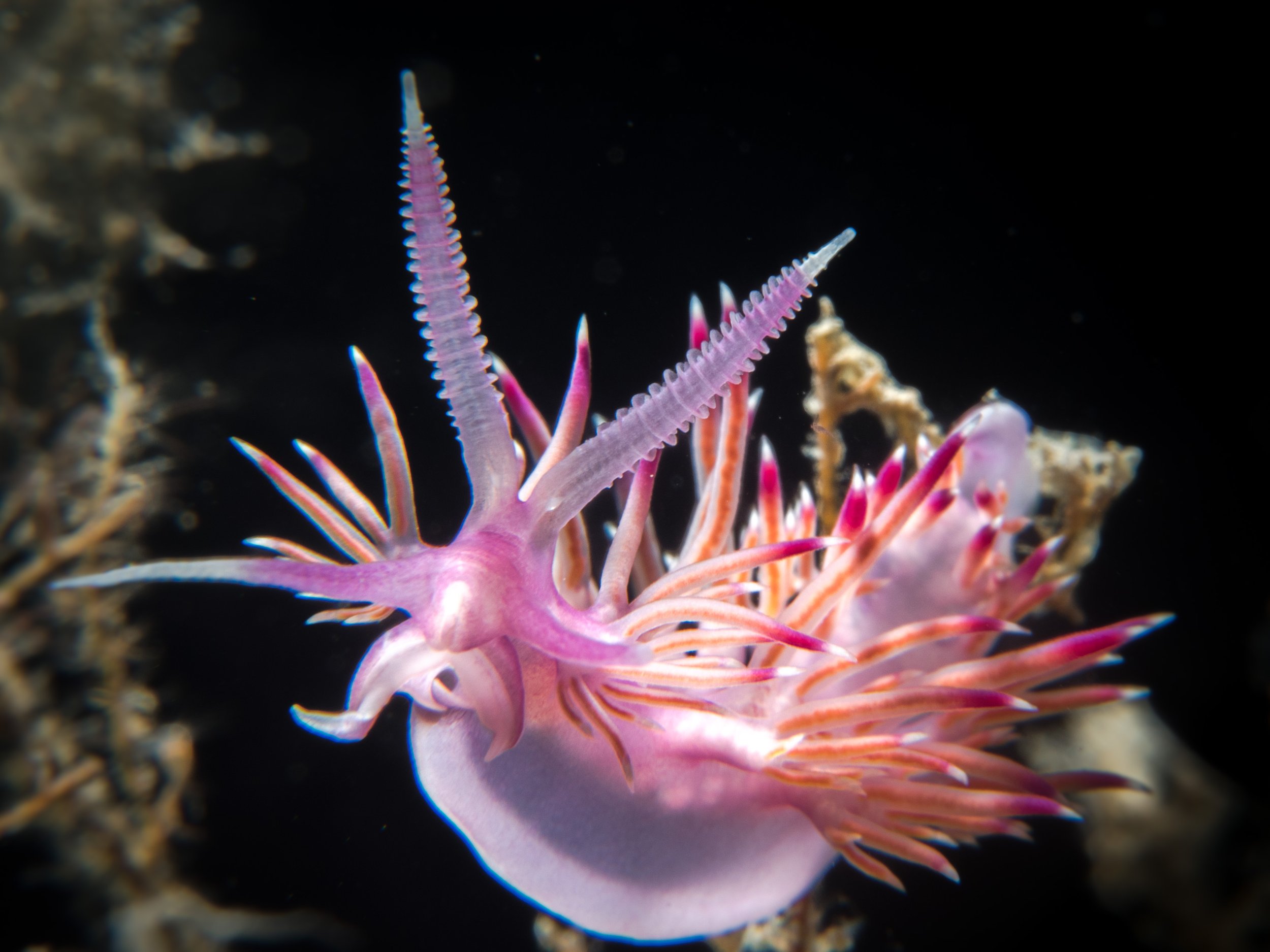




The spotted sea hare (Aplysia dactylomela)
The spotted sea hare (Aplysia dactylomela) can grow up to 40 cm, making it one of the largest nudibranchs found in the Mediterranean.
Its diet consists of algae out if which it can extract pigments and toxins that it uses to produce an irritant purple pink ink which it can discharge when threatened. It also has toxins in its skin making it inedible to most predators
Besides crawling like other nudibranch, the spotted sea hare can also swim by creating a water jet effect with its “wings” for propulsion and then flapping its wings to steer.
This nudibranch has a large neural ganglion which is similar to that of vertebrates, making it ideal for the study of electrophysiology and conditioned-response studies in neurology research.





